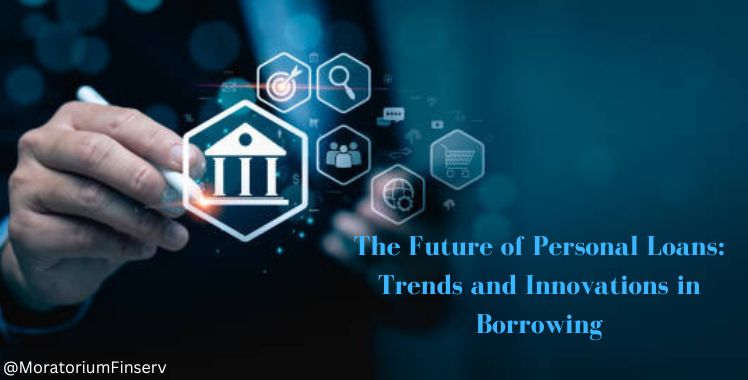The Future of Personal Loans: Trends and Innovations in Borrowing
The financial landscape is continually evolving, and personal loans are no exception. As we navigate through the digital age, innovations and trends in borrowing are reshaping how consumers access and manage personal loans. This transformation is fueled by technological advancements, evolving consumer preferences, and shifts in regulations. Let's delve into the future of personal loans and explore the trends and innovations that are set to redefine borrowing.
1. Digital Lending Platforms
One of the most significant trends in the personal loan sector is the rise of digital lending platforms. Traditional banks and financial institutions are no longer the sole players in the market. Fintech companies have emerged, offering streamlined, user-friendly platforms that simplify the borrowing process. These digital platforms leverage technology to provide instant loan approvals, minimal documentation, and quick disbursals, making borrowing more accessible and convenient.
2. Artificial Intelligence and Machine Learning
Artificial Intelligence (AI) and Machine Learning (ML) are revolutionizing the personal loan industry. These technologies enable lenders to analyze vast amounts of data to assess creditworthiness more accurately. AI-driven algorithms can evaluate non-traditional data points, such as social media activity and online behavior, to provide a more comprehensive credit assessment. This approach not only speeds up the approval process but also opens up lending opportunities for individuals with limited credit histories.
3. Blockchain and Decentralized Finance (DeFi)
Blockchain technology and Decentralized Finance (DeFi) are poised to disrupt traditional lending models. Blockchain offers a transparent, secure, and tamper-proof system for recording transactions, reducing the risk of fraud and improving trust between lenders and borrowers. DeFi platforms enable peer-to-peer lending, eliminating intermediaries and reducing costs. Borrowers can access loans directly from lenders, often at more competitive rates, thanks to the decentralized nature of these platforms.
4. Personalized Loan Products
As data analytics become more sophisticated, lenders can offer highly personalized loan products tailored to individual needs. By analyzing customer data, lenders can create customized loan packages with terms and interest rates that suit the borrower's financial situation. This personalization enhances customer satisfaction and increases the likelihood of loan repayment.
5. Embedded Finance
Embedded finance refers to the integration of financial services into non-financial platforms. For example, e-commerce websites or social media platforms can offer personal loans directly to users as part of their service. This trend makes borrowing seamless and convenient, as consumers can access loans without leaving their favorite apps or websites. It also allows for better targeting of financial products based on user behavior and preferences.
6. Sustainable and Ethical Lending
With growing awareness of environmental and social issues, there is an increasing demand for sustainable and ethical lending practices. Lenders are beginning to incorporate Environmental, Social, and Governance (ESG) criteria into their lending decisions. This means offering loans that support green initiatives or have a positive social impact. Borrowers are also becoming more conscious of the ethical implications of their financial choices, driving the demand for responsible lending practices.
7. Regulatory Innovations
Regulatory bodies are adapting to the changing financial landscape by introducing new regulations that support innovation while ensuring consumer protection. Regulatory sandboxes, for instance, allow fintech companies to test new products and services in a controlled environment before a wider rollout. These initiatives help foster innovation while maintaining regulatory oversight, ensuring that consumers benefit from new technologies without compromising their security.
8. Enhanced Customer Experience
Customer experience is becoming a crucial differentiator in the personal loan market. Lenders are investing in advanced customer service technologies, such as chatbots and virtual assistants, to provide 24/7 support and improve customer engagement. Additionally, user-friendly mobile apps and websites are making it easier for borrowers to apply for loans, track their applications, and manage their repayments.
9. Financial Inclusion
One of the most transformative impacts of these innovations is the potential for greater financial inclusion. Digital lending platforms and AI-driven credit assessments can reach underserved populations who have been excluded from traditional financial services. By providing access to credit for individuals in remote areas or those with non-traditional income sources, these technologies can help bridge the financial inclusion gap.
10. Biometric Authentication
Security is a paramount concern in the lending industry. To enhance security and reduce fraud, lenders are increasingly adopting biometric authentication methods, such as fingerprint scanning and facial recognition. These technologies provide a higher level of security compared to traditional passwords or PINs, ensuring that personal loan transactions are secure and trustworthy.
Conclusion
The future of personal loans is set to be shaped by a myriad of trends and innovations that promise to make borrowing more accessible, efficient, and personalized. From digital lending platforms and AI-driven credit assessments to blockchain and sustainable lending practices, these advancements are redefining the borrowing experience. As lenders continue to embrace these innovations, consumers can look forward to a more inclusive, transparent, and customer-centric personal loan market. Moratorium Finserv is at the forefront of this transformation, leveraging these trends to offer cutting-edge financial solutions that meet the evolving needs of borrowers.

